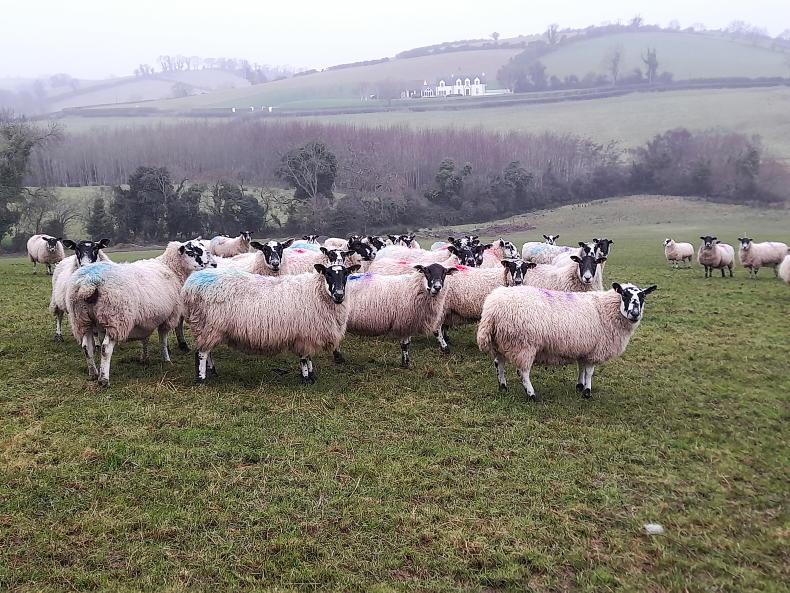We scanned the main flock (185 ewes) before Christmas, and I could describe the results as about average.
The current scanner has been coming here for five years now and he leaves a small card with a detailed breakdown of how many sheep ran through the trailer, and the numbers of lambs they are carrying.
These reports are important because I can stuff them into the back of a drawer in the lambing shed, then forget all about them till next year when I suddenly unearth the ones from previous scans.
This is something of a double-edged sword, since in the old days I was able to erroneously recall past results and convince myself I was on a never-ending upward trajectory. But nowadays I have nowhere to hide and comparisons with my best years leave me wondering what I’m doing wrong.
Results
In the last five years, we have scanned 10 batches, and results range (including empties) from 170% to 197%. This year, we are at exactly a lamb and three quarters (175%), and this is absolutely fine except it doesn’t compare favourably with those high achievers.
While I regularly state that anywhere close to 200% is merely a recipe for multiple births and therefore trouble, part of me also enjoys the kudos that a big crop brings when in conversation with fellow shepherds.
Recording
I would imagine that if I had one of these all singing, all dancing electronic recording systems, I might be able to pinpoint which animals are not pulling their weight. More importantly, it might tell me what ewes are more likely to produce singles.
For instance, I often wonder if there is a price to pay after successfully nursing those ewe lamb doubles along to tupping time. Tonnes of extra meal to both mothers and offspring, thin sheep at weaning time and lambs that stay far too long on-farm. Does this translate into a young breeder that takes a rest for a year? Or is the issue some of those elephantine donkeys of mature ewes that were as fat as bears by June, and waddled around without losing enough weight in October?
I operate a much simpler system: all sheep are marked in the middle of the back with one purple dot, and anybody that requires some extra love after weaning gets two purple dots. This means that my method of deciphering lamb crop after scanning involves wandering around them in the field, trying to establish if there is a pattern to be found. There isn’t.
Link
I spent half an hour with one flock of 90 ewes, hoping to see some sort of link between singles and age or body condition. But without some more accurate means, this didn’t yield any firm results. Besides, it’s hard to draw a conclusion when some ewes won’t let you near them, others stay stationary, and some purple marks have faded significantly.
However, the most worrying aspect to potential lamb numbers is that nowadays I have more time than ever to bestow love and care on my flock.
This autumn, my sheep have never been better tended: I was fussy about body condition, I was careful about both ram body condition and the state of their feet, and, most dangerously, I got a bit ahead of myself.
As scanning approached, I had convinced myself this was the year I would claim the bragging rights on lamb numbers. I was even rehearsing how to surreptitiously drop the occasional, ‘Oh aye, I cannae remember exactly, think it was a bit over 200%’ into everyday conversation. Instead, I’ll have to go with being Mr Average. Yet again.






 This is a subscriber-only article
This is a subscriber-only article









SHARING OPTIONS: